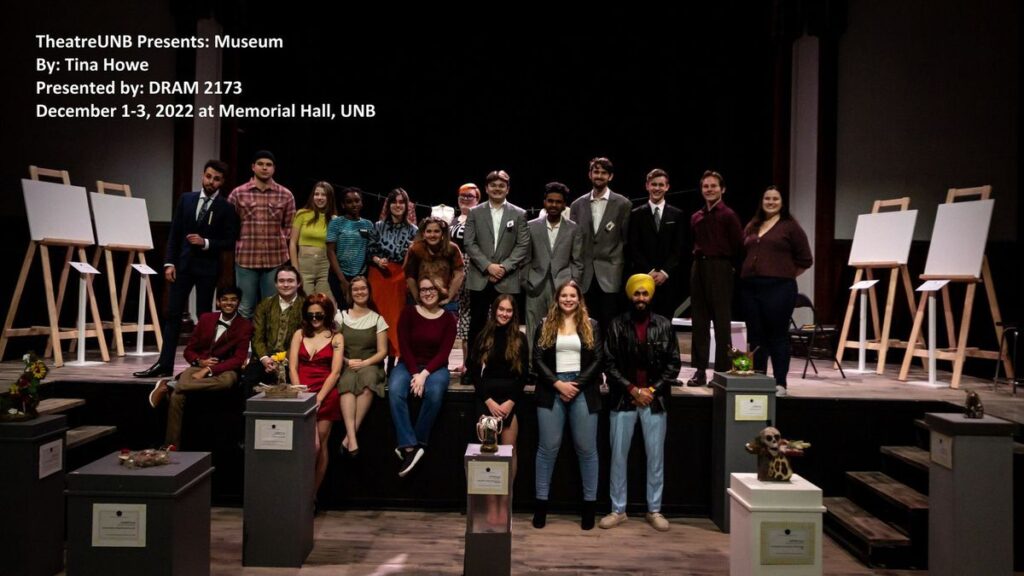UNB Theatre’s recent production of Tina Howe’s Museum is a relevant and striking piece that encompasses the experience of witnessing art, and admiring fellow witnesses. The play’s director, Len Falkenstein, calls upon art’s cause, draw, and effect in the modern world. It has morphed into stages for protest, recalling the recent climate activist’s destruction of art, while also mentioning the minuscule art within everyday life. Running from December 1st to 3rd at UNB’s Memorial Hall, the play blurs the definition of art and its value.
The setting is an American Fine Arts Museum in the present day, and while there is no definite action, climax, and resolution, the play’s plot is made up of characters interacting on the last day of a show. The play’s stage was expanded onto the main floor, creating a surrounding stage with the actors truly at the center. The audience’s various perspectives were crucial in conveying the play’s central message, that is, the different lenses through which we can look at art.
The characters within the museum offered vastly contrasting opinions of the artworks, as certain characters dismantled pieces in hilarity, while others basked in awe of the same work. Museum questions what we value, and how we decide what we value.
Many place value in money and a work’s material worth, like characters Barbara Castle and Barbara Zimmer, played by Christina Blom and Pammy Smyth, respectively. The two were wealthy, shallow women who spent a significant amount of time debating which painting would look best around each other’s home, along with complaints surrounding the inevitable decrease of luxury materials they routinely indulge in.
On the same thread, two elitist characters Bob Lamb, played by Liam Johnson, and Will Willard, played by Ell Gignac, spoke snobbily of the opinions of the artworks within the museum, singing praises of only their own. Their narrowmindedness does reflect the trend of individuality throughout all of the characters.
The experience from character to character is drastically different. Notable for her impressive performance, Sammy Cormier, who played the captivating and dramatic Tink Solheim, attempted to demonstrate to the surrounding characters her dedication and love for the artist Agnes Vaag, an artist who sculpts with solely found organic materials, by grabbing the piece and waves it around shouting about the significance she had placed upon it. While everyone was concerned about its safety, Tink is enraptured by the art in an entirely individualistic way, unable to see the gravity of the situation.
The piece at the very back of the stage was under constant threat of debasing, and after the artist visits to touch up his work, the witnesses place immense value upon the art. Each takes a piece for themselves, including comic relief Zoe, played by Heidi Downing, and photographer Michael Wall, played by Ravtej Singh.
In great contrast, the final scene is of the deaf and mute parents of one of the artists roaming through their son’s art, overcome with love. The two signed to each other, but there is no need for translation as their awe of the art is clear. Such an experience was beautiful to realize, as the play was to witness.
The play was performed by Falkenstein’s class, Drama 2173, who is also the acting Director of Drama at UNB. Technical direction is credited to Trent Logan.




